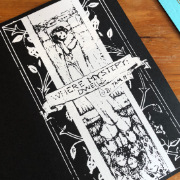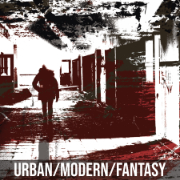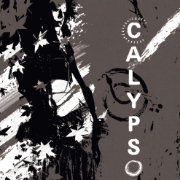Imaginary GM System Redux (iGMsr)

filed under soloing on 19 Oct 2016
tagged solo, solo gaming, tool, emulator, igms, igmsr, and solo frameworks
So, after a bit more reading and thinking, I’ve come up with a modified version of my iGM system using two d6s (and inspired by Apocalypse World’s “10+/6-“ mechanic) that I think serves the same general purpose as my original concept, but with a clearer way to handle the outcomes as they come up in play.
I wanted to explore the idea of consensus further; if my imaginary GM agrees with me that a path or action is the most interesting one, why should I have to roll for it? As long as it is within the scope of my hero’s abilities and the world’s physics, of course.
Basics
The only tools needed are two six-sided dice.
Whenever a question comes up where the hero wants to achieve something of consequence and the world might not let him (see ‘statement of intent’ from my original iGM post for context and definitions), determine if the answer is “Yes” or “No” using your normal oracle, discarding any qualifiers. If you have no oracle or would prefer to just use the d6s, designate one die as “Yes” and one as “No” and roll them both. Whichever is higher is the answer, plus if it’s ‘No’ you’ve already got your complication dice roll. In Pythia, just count the first die of a “2d6” roll result as the “Yes” die and the second as the “No” die.
On a “Yes”, the hero achieves his goal because the imaginary GM agrees that achieving his goal is more interesting than the alternative; he resists the sorcery instead of spending the next few weeks as a mindless drone, he leaps over the wall and continues the pursuit after the man who has stolen the ring from his pocket, he succeeds at charming the woman with the key that he must have to unlock the forbidden door. Treat it as a success on whatever mechanic you would have rolled if you weren’t using this system, if effects would be had, or just accept it as part of the game fiction and continue.
On a “No”, the situation is not so easily resolved. Roll 2d6 (if you haven’t already) and add the current Elan.
From this point forward, the system doesn’t adjudicate success or failure at a task (that’s what your mechanics are for), but instead determines if the hero has a chance to get what he wants, if complications arise or if what he wanted was never really possible in the first place.
On a 10+, the hero has a shot at getting exactly what he wants (note that this might be different from what he needs). Roll your mechanics as usual; on a success, he succeeds exactly as he intended. On a failure, he fails, and a new minor (immediate or long-term) complication, wrinkle, or drawback is introduced to the situation.
On 7-9, the hero has a shot at getting what he wants, but it may not be exactly as he wanted it and it will not be without cost. Roll your mechanics. On a success, he still suffers an immediate or long-term minor complication. On a failure, the complication is major, either immediate or long-term.
On a 6-, the odds are against success, and even if he succeeds, the victory is subverted or twisted in some way (if he meant to subdue, he kills, for example). Roll a mechanics check, using the Elan as a penalty (or boost to the target DC). Additionally, as soon as the mechanics check is resolved, he suffers a major, immediate complication.
Note that in all cases, you should apply the results of your mechanics check first. If this means HP loss, or status effect gained, or something similar, it’s in addition to any imposed complications and generally happens first. The mechanics check also (except in the case of a clear “Yes”) indicates success or failure at the attempted task or goal. It’s entirely possible to fail an action on a 10+, or to succeed at an action on a 6-; what the iGM does is tell you how complicated the resulting situation will be.
The complications should flow from the fiction, but also relate to the mechanic used. When in doubt, remember that ‘personal injury’ is always a potential complication. Complications are almost always bad, and they’re always, well, complicated. If you can’t think of a suitable complication or twist, you can always replace any complication with a random event.
If your hero’s goal is to navigate to the heart of a maze, if the dice say “Yes” it means he is at the center of the maze. On a “No”, he rolls a complication roll, then makes an applicable mechanics check (or several, as the case may be with your system) for ‘navigating a maze’. If he succeeds on his mechanics, he finds his way to the center of the maze; if he fails it, he’s somewhere else (or lost, as your system dictates). Regardless, depending on the complication roll, he could suffer any of the following complications: “he loses part of his rations” (minor, long-term), “something follows him” (minor, immediate), “a foe is alerted to his presence” (major, long-term), or “something ambushes him” (major, immediate).
Elan
Elan starts at 3. It can be between -3 (worn-down and battle-weary) and +3 (fresh and ready to face new challenges). At the beginning of each scene, determine your hero’s state of readiness to face upcoming challenges and set the starting Elan accordingly. If a scene naturally flows from the prior one without much of a change to the hero, leave the Elan unchanged.
Every time you roll a “Yes”, subtract one from Elan. If your hero is refreshed in some way, either by resting, reconnecting with the world, or a personal victory, gain back one to Elan.
Any time a complication might come into play, you can choose instead to reduce Elan by one point (unless it’s already at -3).
Obviously this isn’t a revolutionary or novel system, just something that’s occurred to me over play. Seems to work pretty well, too. I think this will be my ‘go to’ system for a while, and hopefully I’ll come up with some new refinements and tweaks to it in play!


